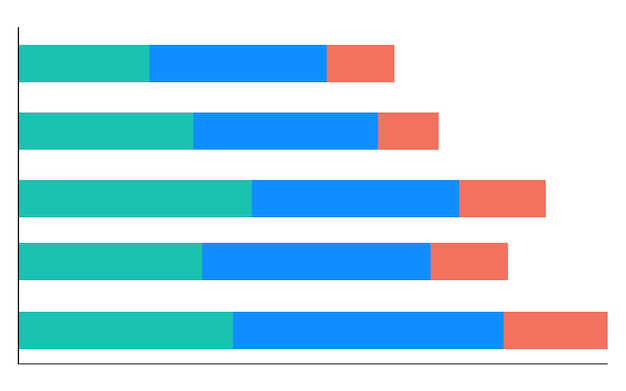Understanding Risk Tolerance: A Key to Financial Planning

Understanding your risk tolerance is a critical first step in financial planning, as it guides investment decisions and ensures your financial strategy aligns with your comfort level and goals.
Embarking on the journey of financial planning requires a solid understanding of your own comfort level with risk. Understanding your risk tolerance: A crucial step in financial planning involves much more than simply choosing investments; it’s about aligning your financial decisions with your personality, goals, and capacity to handle market ups and downs.
What is Risk Tolerance and Why Does It Matter?
Risk tolerance refers to your ability and willingness to stomach fluctuations in the value of your investments. It’s a psychological profile that influences how you react to market volatility and potential losses. Understanding this aspect of yourself is fundamental because it shapes the type of investments you should consider.
Why is it so important? Imagine investing heavily in high-growth stocks only to panic and sell them at a loss during a market downturn. Without a clear understanding of your risk tolerance, you might make impulsive decisions that derail your financial plan.
Factors Influencing Risk Tolerance
Several factors contribute to your individual risk tolerance. These can be broadly categorized into:
- Age and Time Horizon: Younger investors typically have a longer time horizon, allowing them to take on more risk as they have more time to recover from potential losses.
- Financial Goals: Your specific financial goals also play a crucial role. Saving for retirement might allow for more risk-taking compared to saving for a down payment on a house in the near term.
- Financial Situation: Income, savings, and debts all influence your capacity to take risks. A solid financial foundation often allows for greater risk tolerance.
- Knowledge and Experience: Investors with more knowledge and experience in financial markets are often more comfortable with risk because they better understand market dynamics.
In conclusion, grasping your risk tolerance helps ensure that your financial plan is aligned with your personal circumstances and goals. Ignoring it can lead to stress, poor investment decisions, and potentially hinder your long-term financial success.

Assessing Your Risk Tolerance: Questionnaires and Tools
Accurately assessing your risk tolerance isn’t just a matter of gut feeling; it usually involves a combination of introspection and utilizing available tools. Questionnaires, risk assessment tools, and even consulting with a financial advisor can provide valuable insights.
Let’s delve into some of these methods:
Risk Tolerance Questionnaires
Many financial institutions and websites offer risk tolerance questionnaires. These questionnaires typically ask a series of questions designed to gauge your reactions to different financial scenarios. Questions might include your investment time horizon, your comfort level with potential losses, and your past investment experiences.
Self-Reflection Exercises
While questionnaires provide a structured approach, self-reflection is equally crucial. Consider the following questions:
- How do you react to losing money? Are you able to maintain a rational perspective, or does it cause you significant anxiety?
- Do you tend to make impulsive decisions when faced with financial uncertainty?
- How much do you know about different investment options? Do you feel comfortable researching and understanding complex financial products?
Determining your risk tolerance is an ongoing process that requires honest self-assessment and the use of appropriate tools. By gaining a deeper understanding of your risk profile, you can build a financial strategy that aligns with your personal circumstances and goals.
Conservative, Moderate, or Aggressive: Understanding Risk Profiles
Once you’ve assessed your risk tolerance, you’ll likely fall into one of three broad categories: conservative, moderate, or aggressive. Understanding these profiles can further clarify your investment approach and guide your choices.
Each profile has distinct characteristics and investment strategies:
Conservative Investors
Conservative investors prioritize capital preservation and are generally averse to risk. They seek stable investments that offer modest returns with minimal volatility. Common investment choices include:
- High-quality bonds
- Certificates of deposit (CDs)
- Money market accounts
Moderate Investors
Moderate investors seek a balance between capital appreciation and risk management. They are willing to accept some volatility in exchange for potentially higher returns. Their portfolios usually consist of a diversified mix of:
Aggressive Investors
Aggressive investors are comfortable with higher levels of risk in pursuit of substantial returns. They are willing to tolerate significant market fluctuations and potential losses. Their portfolios might include:
- Growth stocks
- Emerging market funds
- Real estate

In essence, understanding where you fit on the risk tolerance spectrum helps you craft a personalized investment strategy that aligns with your financial goals and comfort level, ensuring a more secure and stress-free financial future.
Aligning Investments with Your Risk Tolerance
The crucial step that follows assessing your risk tolerance is aligning your investment choices accordingly. It’s about building a portfolio that reflects your comfort level and helps you achieve your financial objectives without undue stress.
Here’s how to do it effectively:
Asset Allocation
Asset allocation involves dividing your portfolio among different asset classes, such as stocks, bonds, and real estate. Your risk tolerance should drive this allocation.
Diversification
Diversification involves spreading your investments across various sectors and industries. This helps reduce the impact of any single investment on your overall portfolio. For example, instead of investing solely in tech stocks, you might also include stocks in healthcare, consumer staples, and energy.
Regular Portfolio Review
It’s important to periodically review your portfolio to ensure it still aligns with your risk tolerance and financial goals. Life events, such as marriage, a new job, or the birth of a child, can impact your financial situation and risk profile. Market conditions also change, so it’s a good idea to rebalance your portfolio periodically.
Aligning your investments with your risk tolerance is an ongoing process, not a one-time event. By regularly reviewing and adjusting your portfolio, you can ensure that it continues to reflect your personal circumstances and help you achieve your financial goals.
Common Mistakes to Avoid When it Comes to Risk Tolerance
Even with a good understanding of your risk tolerance, it’s easy to fall into common pitfalls. Recognizing and avoiding these mistakes can help you make smarter financial decisions and maintain a well-balanced portfolio.
Here are some frequent errors to watch out for:
Taking on Too Much Risk
One of the most common mistakes is investing in assets that are too aggressive for your risk tolerance. This often happens when investors are chasing high returns or are influenced by market hypes. Before investing in any asset, assess whether you’re comfortable with the potential downside.
Ignoring Risk Tolerance Altogether
Many investors make the mistake of ignoring their risk tolerance altogether. They might blindly follow investment recommendations or invest based on what’s popular, without considering their own comfort level with risk.
Not Diversifying Properly
Diversification is essential for managing risk, but many investors fail to diversify properly. A properly diversified portfolio should spread investments across different asset classes, sectors, and geographic regions.
Being aware of these frequent errors is a critical step toward making sound financial decisions that align with your risk tolerance and contribute to your long-term financial success. Remember, investing is a marathon, not a sprint, and understanding your risk tolerance is essential for staying in the race.
Adjusting Your Financial Plan as Your Risk Tolerance Changes
Your risk tolerance isn’t static; it can evolve over time due to various life events and changes in circumstances. Adjusting your financial plan to reflect these changes is crucial for maintaining a secure and balanced portfolio.
Here’s how to adapt your plan effectively:
Life Events
Major life events, such as marriage, the birth of a child, a new job, or retirement, can all impact your risk tolerance. For example, as you approach retirement, you might want to reduce your exposure to risk by shifting some of your assets from stocks to bonds.
Market Conditions
Changes in market conditions can also influence your risk tolerance. A prolonged period of market volatility might make you more risk-averse, while a bull market might make you more willing to take on risk. However, it’s essential to avoid making impulsive decisions based solely on market fluctuations.
Regular Reassessment
Regularly reassessing your risk tolerance is crucial. At least once a year, review your financial plan and consider whether your current investments still align with your risk profile and goals. Use questionnaires and self-reflection exercises to gain a deeper understanding of your evolving risk tolerance.
Your ability to adjust your financial plan as your risk tolerance changes will significantly impact your long-term financial success. Staying proactive and informed ensures that your portfolio remains aligned with your personal circumstances and helps you achieve your financial goals with confidence and peace of mind.
| Key Point | Brief Description |
|---|---|
| 💡 Assess Risk Tolerance | Questionnaires and self-reflection help identify your risk comfort. |
| 📊 Align Investments | Match investments with your risk profile for balanced growth. |
| 🚫 Avoid Over Risk | Avoid investments exceeding your risk comfort for stability. |
| 🔄 Regular Review | Reassess needs and tolerance for an evolving financial plan. |
[Título da seção FAQ em en-US]
▼
Risk tolerance is your willingness to accept potential losses in exchange for higher potential gains. It guides investment strategies to match your comfort level.
▼
Use online questionnaires, self-reflection exercises, and consult financial advisors. Consider your financial knowledge, goals, and reactions to market volatility.
▼
Common profiles include conservative (low risk), moderate (balanced), and aggressive (high risk). Each has specific investment choices aligned with potential returns.
▼
Marriage, new jobs, or retirement can alter your financial situation and risk comfort. Adjust your portfolio to match your new circumstances.
▼
Diversification spreads investments across sectors, reducing the impact of individual losses. It helps balance risk and ensures a more stable portfolio.
Conclusion
Ultimately, understanding your risk tolerance: A crucial step in financial planning is about aligning your investments with your comfort level, goals, and capacity to handle market fluctuations. By assessing your risk profile and adjusting your financial plan as needed, you set the stage for a more secure and stress-free financial future. Remember, informed choices create a personalized path to lasting financial health.





